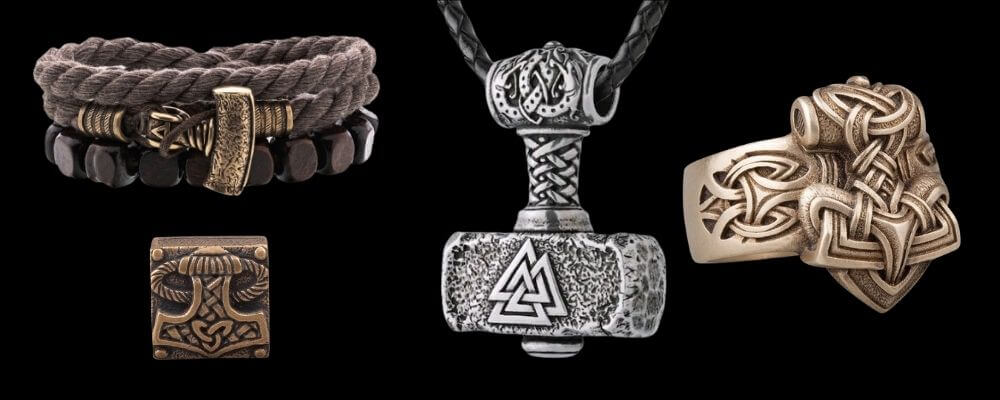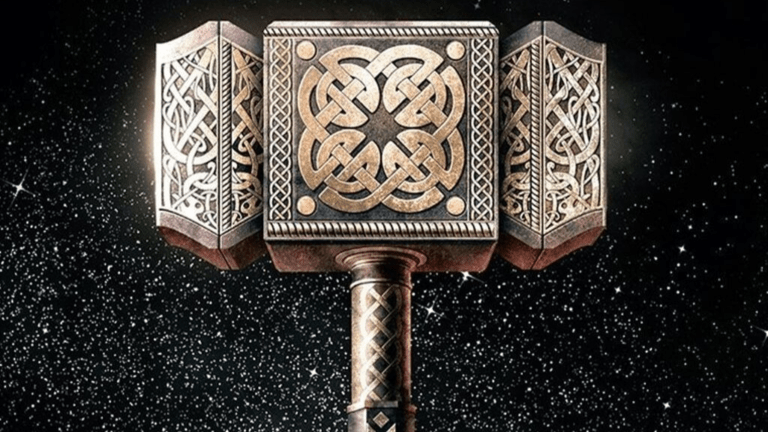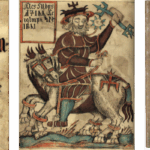Thor’s Hammer, Mjolnir, is the most iconic object from Norse mythology. This was true in Viking times as well as today.
Mjolnir is by far the most common Viking amulet found, and its use survived well into the Christian period as a symbol of continued allegiance to the old faith.
But where did Mjolnir, the hammer of the god of Thunder, come from and why was it special?
Origin Story of Mjolnir in Norse Mythology
Mjolnir, pronounced “me-yol-neer”, found its way into the hands of the god of thunder thanks to the machinations of Loki, according to Norse mythology in the Skáldskaparmál (The second part of Snorri Sturluson’s Prose Edda).

As a prank, Loki cut off the beautiful golden blond hair of Thor’s wife Sif, removing every strand so that it would never grow back. An angered Thor demanded that Loki replace the hair with something as fine, of face the consequences.
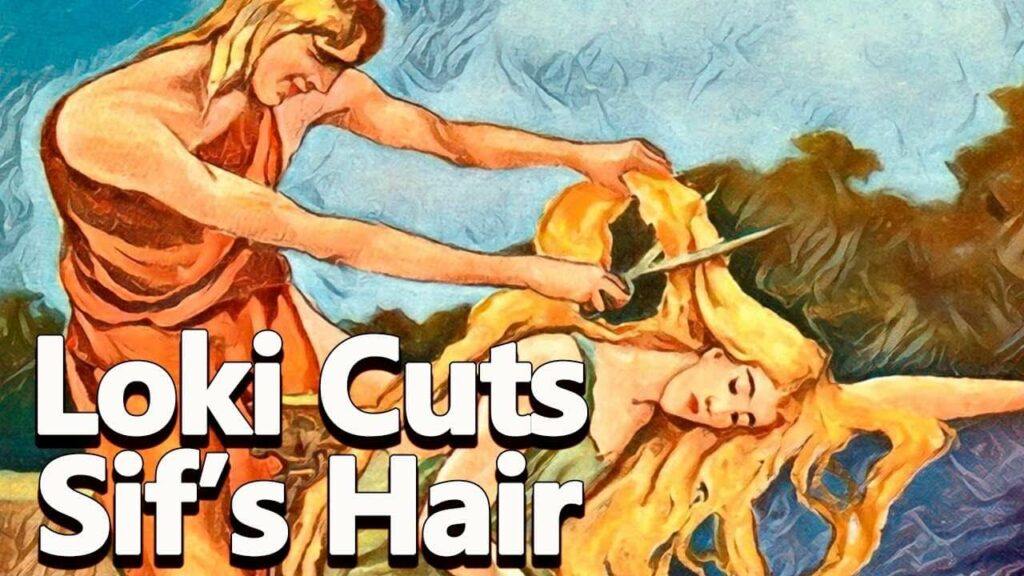
In order to save his skin, Loki travelled to Svartalheim, the land of the dwarves, to consult with the master craftsmen there. He spoke with the brothers Ivaldi, great dwarven craftsmen, who agreed to make a headpiece of Sif, as well as two other treasures to help Loki appease the wrath of the gods.
In the end, as well as a headpiece of fine gold that was enchanted to grow on Sif’s head, the dwarven brothers made :
- Gungnir, the spear of Odin,
- Gullinbursti, the golden boar of the god Freyr.
As he was waiting, as usual, Loki got himself into mischief. He also visited the dwarven brothers Brokkr and Sindri, saying that everyone knew that they could not produce treasures as fine as the Ivaldi, and challenging them to prove him wrong.
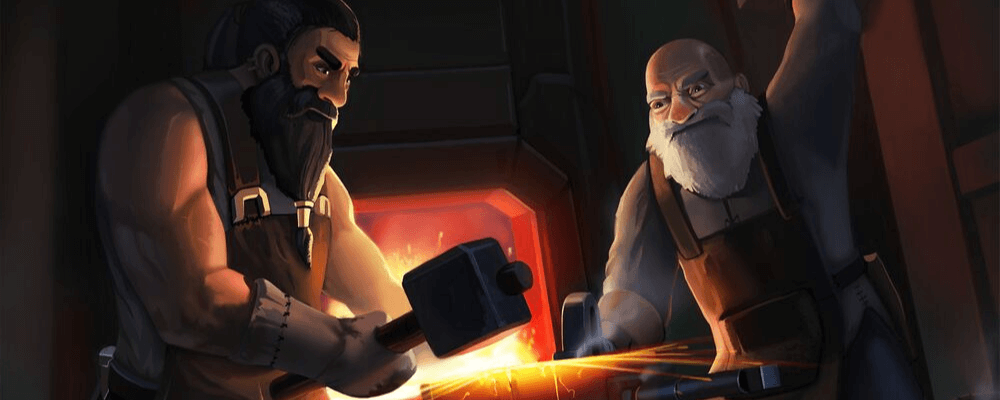
The brothers agreed, but sensibly suspicious of Loki, if they won, the dwarves wanted his head. Loki, always sure that he could outwit anyone, agreed, and then went about sabotaging the work of the dwarves.
The brothers made :
- Odin’s ring Draupnir
- Freyr’s ship Skidbladnir,
- but it was when they started making their final treasure, a mighty hammer called Mjolnir, that Loki began to worry.
As Sindri put the iron for Mjolnir in the forge, he sent his brother Brokkr to pump the bellows. In order to sabotage their work, Loki turned himself into a fly, and bit Brokkr on the eyelid hard enough to draw blood.
As the blood ran into his eyes, Brokkr was forced to stop working the bellows for a few seconds in order to wipe his face, but the damage is done.
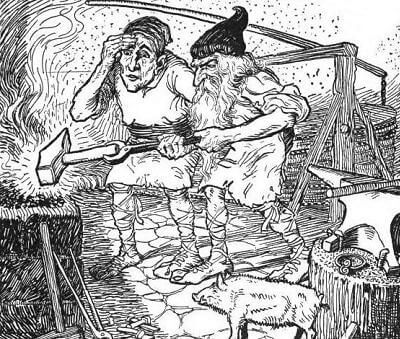
As Sindri drew the hammer from the forge, the handle was much shorter than originally planned, making a hammer that would need to be wielded by one hand, rather than a more traditional Viking two-handed hammer.
As both sets of treasures are taken to Asgard to be judged by the gods, they agree unanimously (with the exception of Loki) that the hammer, Mjolnir, despite its short handle, was the finest object ever made.
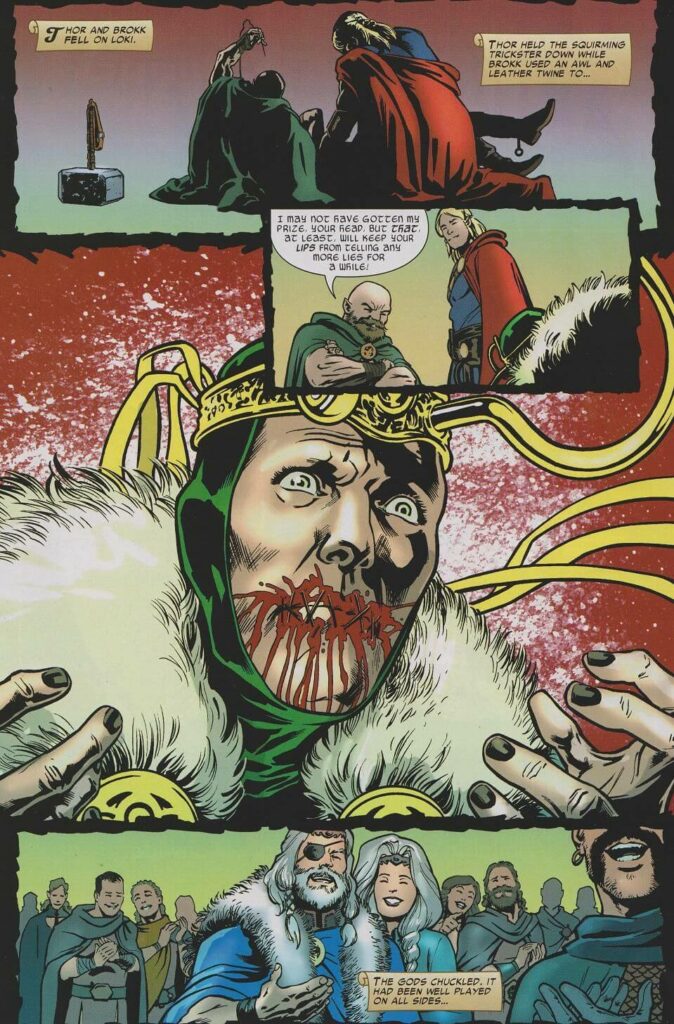
As the dwarves brothers sought to claim their prize, Loki tried to wriggle out of the consequences by pointing out that he promised them his head, but not his neck, and that they could not very well claim one without the other. With the consent of the gods, the brothers had to be satisfied with sewing Loki’s mouth shut (though this seems to have been temporary).
Attributes and Symbolism
Mjolnir, which means grinder or crusher in Old Norse, was powerful enough to destroy mountains, and acted like a kind of boomerang, always returning to the hand of Thor.
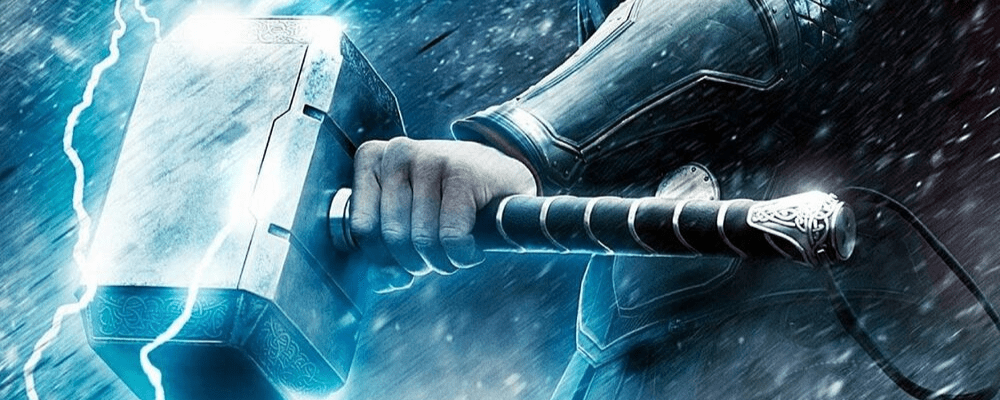
Mjolnir also had the power to channel lightning, and it was thought that the sound of thunder was caused when Thor crashed his hammer down on his foes.
To help him wield the mighty weapon, Norse mythology claims that Thor also possessed a belt, named Megingdjord, which doubled his already prestigious strength. He also had a set of iron gloves called Jarngreipr.
But as well as being a weapon, the Vikings considered Thor’s hammer to be a ritual tool for hallowing places, things and events for their intended purpose, for example, weddings and births. In this way, the hammer integrated these social changes into the established order, dispelling the possible chaos that could be caused by the change.
The story from Norse mythology of Thor and Thrym symbolizes the dual purpose of Mjolnir. Thrym was a giant king in Jotunheim, the land of the giants, who stole Thor’s hammer.
Thrym was in love with the goddess Freya, so Thor disguised himself as the beautiful goddess and agreed to marry Thrym in order to gain access to the giant king’s hall. When the hammer was called forth to hallow the wedding, Thor was able to seize it, and then kill all of the giants in the hall. However, the fact that Thrym could steal the hammer dispels the myth spread by Marvel that only Thor, or the worthy, could wield Mjolnir.
Thus, Mjolnir was a weapon of protection, against violent chaotic forces, such as the giants, but also more subtle chaotic elements, such as social disruption.

Get Your Thor’s Hammer Jewelry
Necklaces, Bracelets, Pendants, Rings
Get-15% Off using code “B15“
Mjolnir in Viking Culture
Thus, Thor’s Hammer was a symbol of protection, so unsurprising, was a popular amulet during the Viking period. More than 50 examples of Mjolnir pendants have been found throughout Scandinavia dating from AD 900-1100.
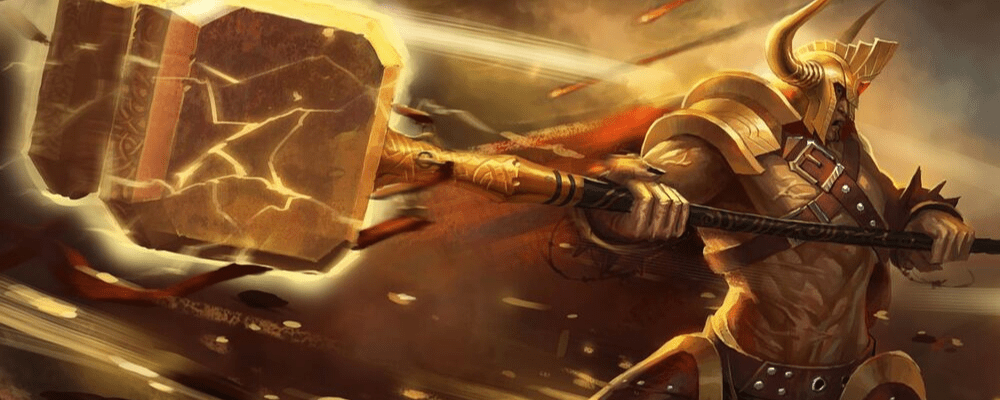
Mjolnir would have been worn for courage and protection, but also to mark the wearer as a follower of the Old Norse religion, rather than Christianity, as their popularity lasts well into the Christian period.
This suggests that Thor, son of Odin, was held up as the prime contender to Jesus, son of the Christian god.
Thor’s Hammer and Ragnarok
According to some versions of the story of Ragnarok, the end of the world, Mjolnir will play a role in the rebuilding of the world.
In the earliest versions of Ragnarok, all the gods are destroyed, and after the apocalypse, there is nothing. Later accounts, probably heavily influenced by Christian ideas, suggest a renewal.
In all versions of the story, Thor will die, after using Mjolnir to slay Jormungandr, as the Midgard Serpent will spew so much poison onto Thor that he cannot survive. His two sons Modi and Magni will then inherit Mjolnir, and use it to bring order to the new world that emerges from the ashes of the old.
